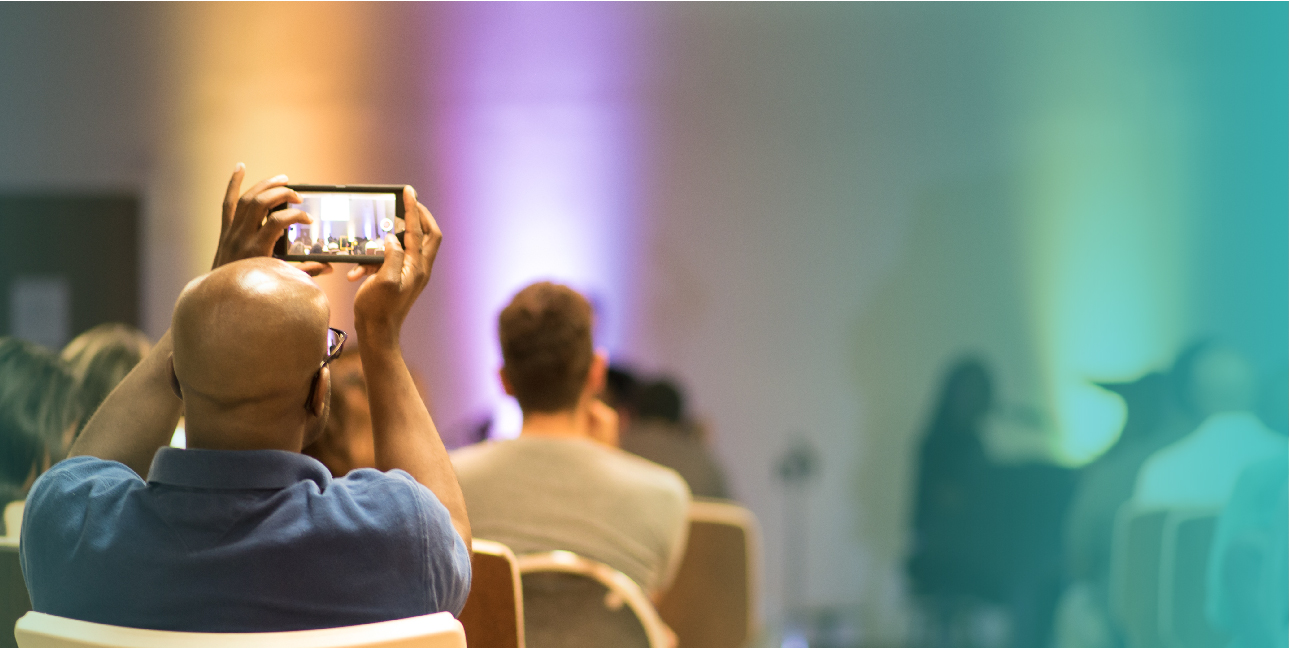Today, it’s not enough to simply host a great event and hope that everyone enjoys it in the moment, the digital public demands more. They demand live coverage. After all, if you didn’t talk about it on social media, did it actually happen?
As a business, you want to get the best ROI out of everything you invest in; events are no different. Here are some ways you can take advantage of live social media coverage to get the best return and engagement from your next event.
Don’t Be Lazy
First, and most importantly, don’t be lazy! I know you’ve got a lot to do today, and you’ve already put so much into your event that now you just want to relax. But your job isn’t over. Live coverage almost always garners additional engagement and reach, that’s why it’s so important. It also leaves guests talking about your event even after the event is over.
Most importantly, using social media to cover your event allows you to reach a much larger audience because even those who couldn’t attend are able to participate. Now that you know that you have to actually have to cover the event, what should you do when you get there?
Knowing When to Facebook Live
Getting on Facebook Live at events is usually the obvious choice, but should it be? It really depends on the event you’re attending. At times, Facebook Live is a great way to reach a larger audience, but there are also times when using another platform might be more effective. When deciding whether or not to stream live, think about what time of day it is. Will your following actually be on Facebook at that time? If the answer is no, then try another platform.
Another thing to consider is the space that your event is taking place in. If it’s a large space with poor lighting and sound, then you may want to avoid going live. No one wants to watch a video that they can’t hear or see. Facebook live should be reserved for certain events where you have the opportunity to make an impression.
Put Your Instagram on Top
Using an Instagram story will literally put your event at the top of all of your followers feed. While Instagram does offer a live video feature, Instagram stories are a fun alternative to Facebook Live. Instagram stories are unique in that they allow you to be creative about the content you’re choosing to display. With the wide variety of creative editing options such as text, drawing pens, and emojis, Instagram lets you put your own personal touch on your post.
You can also keep your audience interested by switching your story up with a boomerang (almost like a gif), or video. Instagram stories remain on your page for 24 hours, so you don’t have to worry about peak times. But, if Instagram isn’t your thing, you could always try out the live tweet.
Tweet, Tweet, Tweet
Everyone loves some good live tweeting. Twitter is a great platform to take advantage of when hosting an event. First of all, it’s a great place for guests to utilizing your event hashtag if you have one (spoiler, you definitely should). Secondly, it allows you to engage with a much larger audience, not just those attending your event. When live tweeting:
- Keep it simple
- Highlight key events like speakers
- Don’t tweet everything you do
- Post pictures with each tweet
Make The Live Coverage Last
When your event is over, you don’t have to stop talking about it. After the live coverage, continue to share photos across all channels and tag guests/organizations that attended. This keeps your audience talking about you and keeps your event top of mind for days after the event is over.
Everyone wants to keep a party going once it’s over. And, after investing countless hours and money, you want to make sure you get a strong return. Facebook Live and social media coverage can accomplish both those goals.









